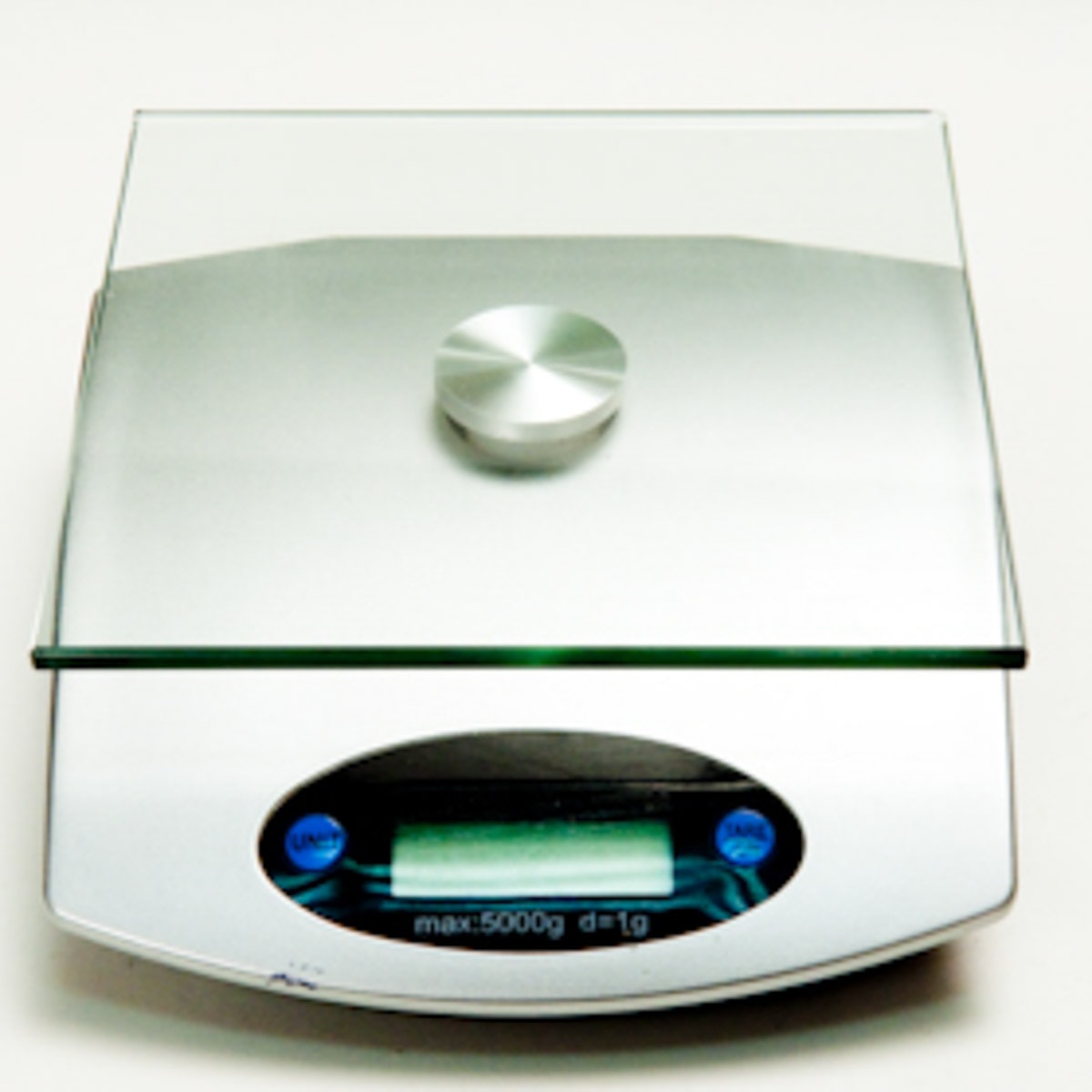
Weighing Ingredients using the Tare/Zero on a Scale is key to ensuring the best outcome when baking. Anyone who has followed my blog for any time, even briefly, knows that I am all for updating recipes and techniques. All you have to do is take a look at the Croissant, 60 Second Brioche, or Cake Pan Prep to see what I’m talking about. It’s what I do and love sharing.
But I’ve just about had it with the “shortcuts” being pushed out as the latest, most wonderful way to bake with little effort and especially as a way to cut down the dishes used.
Many recipes don’t require much effort, or dishes or time. Quick breads are, well, quick. Basically the dry ingredients go in one bowl and the wet ones in another. Add the wet to the dry, whisk them together – you don’t even need a mixer in most cases – pour into a prepared pan and into the oven it goes. Two bowls, a whisk and a few measuring cups and spoons.
So what is the problem with a few dishes? Don’t most of us have dishwashers nowadays? So who cares if you use dishes. Stick ‘em in the dishwasher and walk away. Just don’t forget to turn it on at night or whenever you choose. No dishwasher, clean as you go is my motto. That's what I do at the restaurant.
Buying a Scale
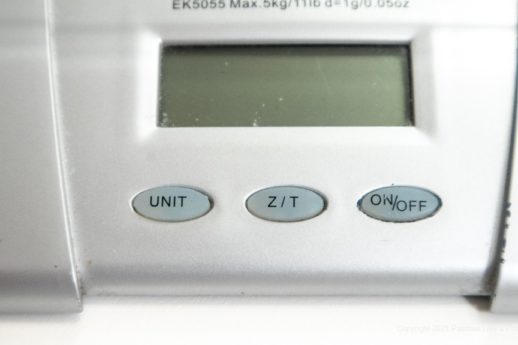
When buying a scale, try to find one that goes to 10 pounds. Make sure it has a unit button or something similar that will allow you to weigh at least in grams or ounces. It also need to have a tare/zero often seen as t/z so the scale can be brought to zero.
Scales are relatively inexpensive nowadays. i usually buy mine at Walmart where they cost about $19.00. Not much to make sure the ingredients are consistent every time.
Weighing Ingredients Using a Scale
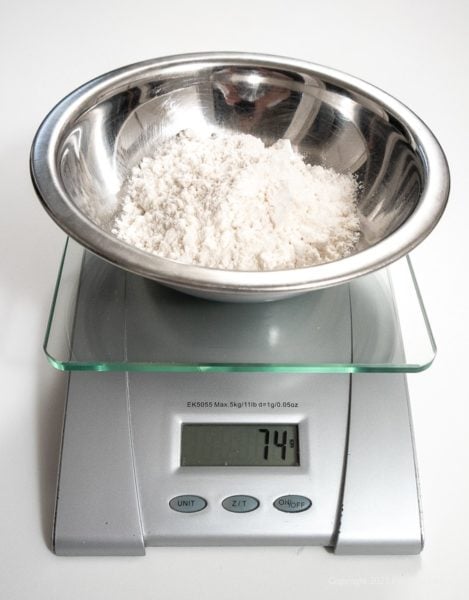
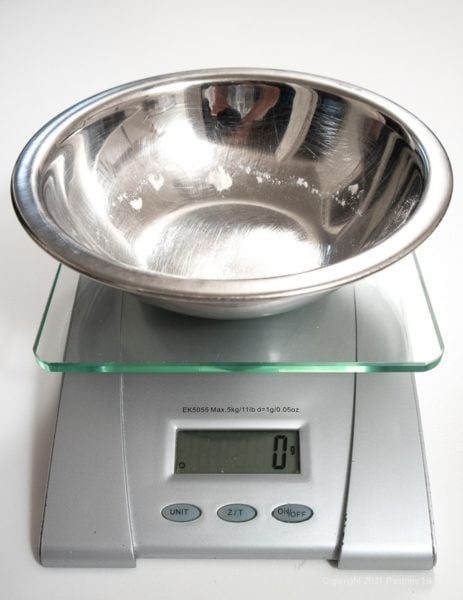
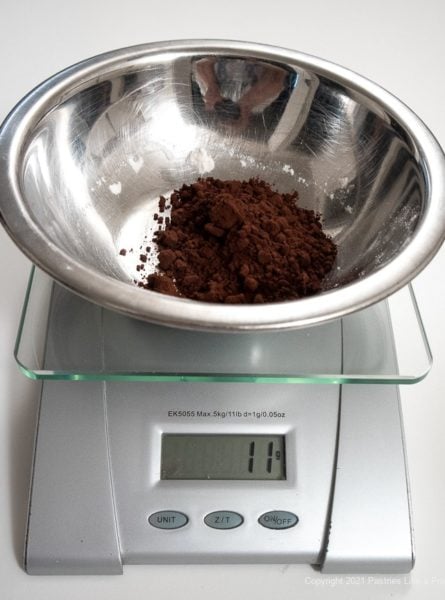
The word tare refers to bringing the scale to zero after a bowl is put on it. What brought this all on is “reverse taring” when weighing. Taring or zeroing is used to exclude a measurement from the total weight given by the scale. Most commonly, this function is used to negate the weight of the container on the scale. If you put a bowl on the scale, hit tare, and then fill the bowl with an ingredient, the scale will only display the weight of the ingredient in the bowl. It will not include the weight of the empty bowl. Empty the flour into another bowl. To add another ingredient to a container on the scale, just hit the tare/zero button before adding it. The scale will go to zero, add the ingredient and the weight of the ingredient will show up. Here I have added cocoa to the bowl.As you can see only the cocoa is weighed, not the flour that was previously in the bowl. The button can also be referred to as a zero button. My scale has a t/z on it for tare or zero.
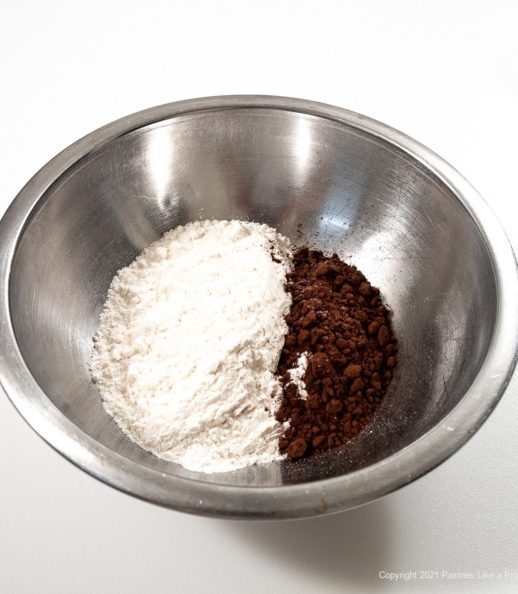
Add the cocoa to the bowl with the flour.
Add any other ingredients to this bowl as called for, just don’t exceed the total weight of the scale.
Reverse Taring
With the new rage – reverse taring- one is to put the bag of flour, sugar or whatever on the scale. Press the tare or zero button. The scale will go to zero. Say you want to weigh 125 grams. With the mixer running you are to pick up the bag and add the flour or sugar to the mixer. Replace it on the scale and the weight you added to the mixer will show. If you didn’t guess right, you have to do it again. Too much flour or sugar? Well sorry, you already mixed it in.
Here’s the problem they aren’t talking about. If you take too long, the scale turns off and you have lost the weight you added to the mixer so you won't know how much is being used. Additionally, if you add too much you have to fish it out. And don’t forget, you have the watch the scale and move quickly so it doesn’t turn off.
Here is a tic-tock showing this. It is by far the dumbest idea I have seen when it comes to baking. It shows the person adding flour several times to the mixer. Then a bottle of milk is on the scale and the person does the same thing. She pours some milk in while the mixer is running, puts it back on the scale, gosh she needs some more so she picks it up again and adds more. If you notice, she is not even looking at the weight on the scale.
In the video she is seen complaining that if you do it the regular way, you have to keep taking the mixer bowl and paddle off the mixer, weigh an ingredient in it and then reattach everything to mix it. Of course, she is totally upset trying to scrape the mixture off the paddle.
Who does this?
Mise en Place
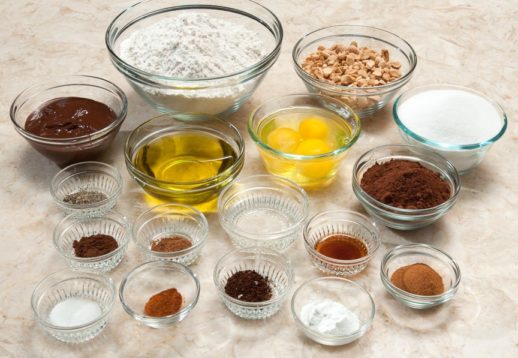
You will notice in most of my blogs I show the ingredients at the beginning of the list. Each is in a separate bowl. This is called mise en place – a French word meaning “everything in its place”. In other words, if you prep all the ingredients in their own container you won’t forget anything. This is the absolute best way to bake, especially if you are new to baking or are prone to jumping around the ingredient list to measure.
Ideally, you would prep your ingredients in the order listed. That way there is less room for error. After I have prepped my ingredients I count them. There is a running joke in my house that I may not have the right ingredients but I sure have the correct number!
Best Way to Prep Ingredients
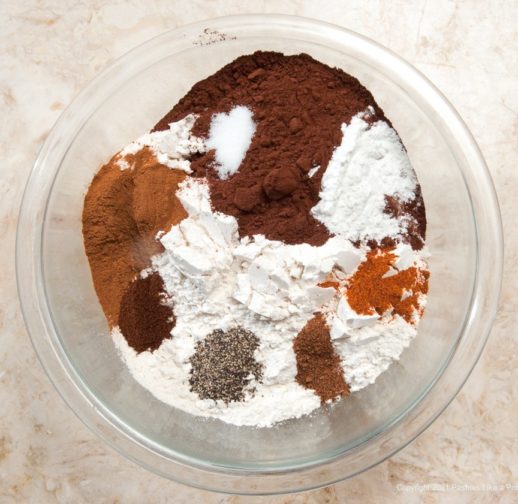
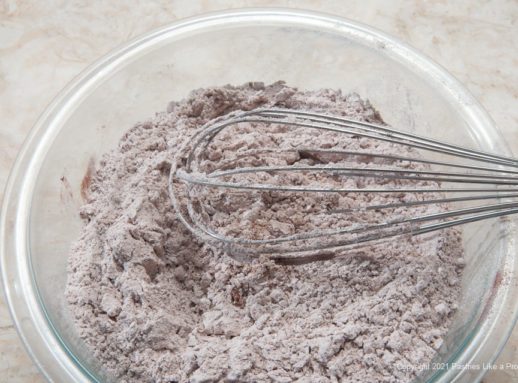
I absolutely think this is the best way to bake. Do I do it, not always. If a recipe tells me to combine the dry ingredients, I measure one ingredient at a time and place it in a bowl. Let’s take flour, sugar, cocoa, spices, baking powder, and salt. I would weigh the flour in a bowl and place it in another bowl as I did above. I would then weigh the sugar in the original bowl and pour it into the bowl with the flour. Ditto with the cocoa. Then the baking powder, spices and salt would be added then all whisked together. I have used 2 bowls, a couple of measuring spoons and a whisk. Not much to insure all the measurements are correct.
By weighing ingredients using a scale, if I over weigh, it is simple to just remove enough to correct the weight in the original bowl and then add it to the other ingredients. By weighing one ingredient on top of another if too much is weighed some has to be removed. Often some of the other ingredients below in the bowl come out with it.
This is the procedure we followed at the bakery. I follow it at home and at the restaurant – where by the way, I do my own dishes because I don’t have a dishwasher.
As an advocate of scales for over 30 years, I am delighted to see they are catching on. Now all we have to do is use them correctly.
I wonder how many recipes will turn out badly using the reverse method before people realize this is a fallacy. I hope not many. Especially since they are going to have to scrape off all that batter on the paddle!
If you liked Weighing Ingredients Using the Tare/Zero on a Scale, see:
Measuring for Baking
Flour as Used in Baking
How to be a Better Baker


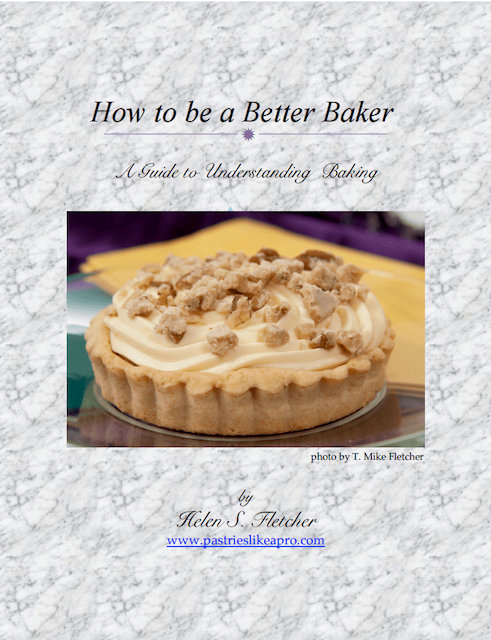

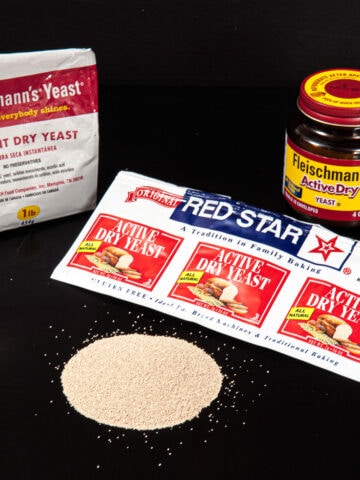
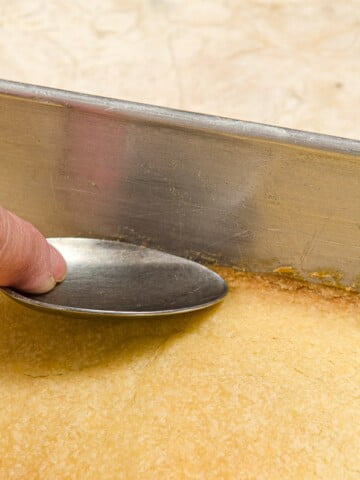
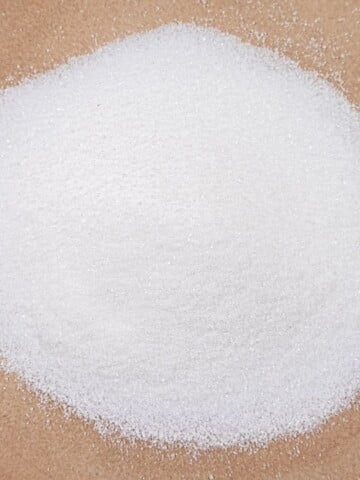
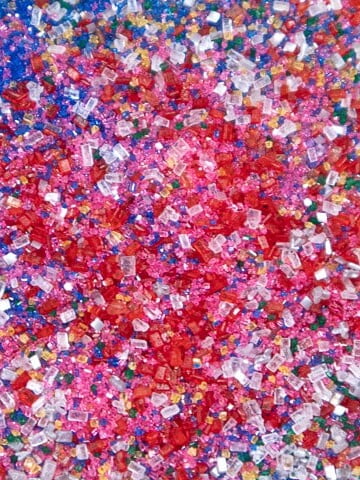
Leave a Reply